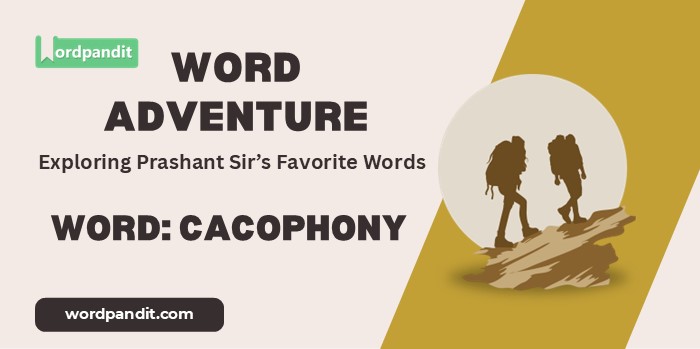Word Adventure: Cacophony
The Headline
“Cacophony: When Sound Becomes Beautiful Chaos”
The Scoop
In the vast symphony of language, some words perfectly embody the very thing they describe. ‘Cacophony’ is one such word – a term whose harsh-sounding syllables mirror its meaning of discordant noise. Let’s explore this fascinating word that brings music to our ears… or perhaps anti-music!
Let’s Break It Down
The Plot Thickens
‘Cacophony’ emerged from ancient Greek roots that literally mean “bad sound.” The Greeks, with their love of harmony and order, used this term to describe anything that offended their musical sensibilities. The word made its way through Latin and French before finding its home in English during the 17th century.
Interestingly, what constitutes a cacophony has evolved over time. What might have been considered cacophonous to medieval ears might sound perfectly normal or even musical to modern listeners. This evolution reflects changing cultural attitudes toward harmony and discord in both music and everyday life.
Today, ‘cacophony’ has expanded beyond its purely musical origins. It can describe any jarring mixture of sounds, from urban traffic to political discourse, making it a versatile metaphor for discord in various contexts.
Word in the Wild
The Twist
Here’s something intriguing: while cacophony is often viewed negatively, it plays a crucial role in modern music and art. Many groundbreaking composers and musicians have intentionally incorporated cacophonous elements into their work, challenging our perceptions of what constitutes “good” sound. In fact, what was once considered cacophonous in classical music – like jazz’s complex harmonies or rock’s distorted guitars – has become mainstream, showing how our tolerance and appreciation for different types of sound continues to evolve.
Make It Stick
Cacophony: When sounds collide and harmony takes a wild ride!
Your Turn
Think about the most memorable cacophony you’ve ever experienced. Was it purely chaotic, or did you find a strange beauty in the discord? Share your cacophonous encounters in the comments below. Let’s explore how these clashing sounds contribute to the symphony of our daily lives!
Down the Rabbit Hole
- Curious about musical dissonance? Explore avant-garde composers like John Cage or Arnold Schoenberg.
- Interested in the physics of sound? Research acoustics, wave interference, and how discordant sounds interact.
- Want to learn about noise pollution? Dive into urban soundscapes and their effects on human health and well-being.
The Last Word
As we conclude our exploration of ‘cacophony’, I hope you’ve gained a new appreciation for this wonderfully descriptive word. It reminds us that sometimes discord can be as meaningful as harmony, and that beauty can be found even in chaos. The next time you find yourself in the midst of a cacophonous moment, remember – you’re experiencing a phenomenon that has fascinated humans since ancient times! Until our next word adventure, this is Prashant from Wordpandit, encouraging you to listen carefully to life’s many sounds, even the discordant ones!












